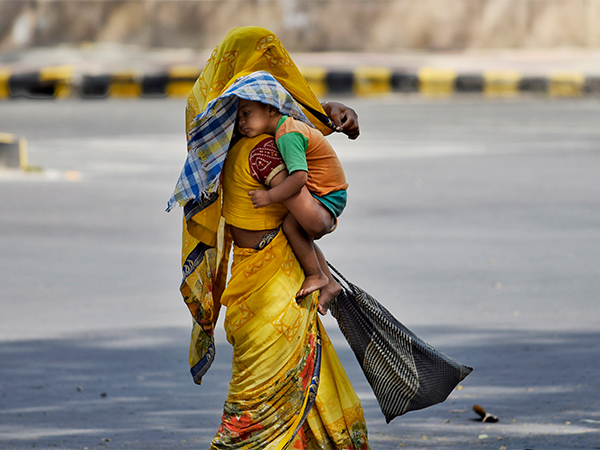India's economy to shrink by 9 pc this year: ADB
Sep 15, 2020

Manila [The Philippines], September 15 : India's economy is expected to contract by 9 per cent this year -- worse than the 4 per cent contraction it had forecast three months ago, the Asian Development Bank (ADB) said on Tuesday.
However, it expects India to bounce back with 8 per cent growth next year as the country begins to emerge from the economic devastation caused by coronavirus (COVID-19) pandemic.
In the first quarter of the current fiscal year, India's GDP contracted by a record 23.9 per cent as lockdowns stalled consumer and business spending.
Elsewhere, the Asian Development Outlook (ADO) 2020 Update forecasts minus 0.7 per cent gross domestic product (GDP) growth for developing Asia this year -- marking its first negative economic growth since the early 1960s.
Growth will rally to 6.8 per cent in 2021, in part because growth will be measured relative to a weak 2020. This will still leave next year's output below pre-COVID-19 projections, suggesting an L-shaped rather than a V-shaped recovery.
About three-quarters of the region's economies are expected to post negative growth in 2020.
"Most economies in the Asia and Pacific region can expect a difficult growth path for the rest of 2020," said ADB Chief Economist Yasuyuki Sawada.
"The economic threat posed by COVID-19 pandemic remains potent as extended first waves or recurring outbreaks could prompt further containment measures."
Consistent and coordinated steps to address the pandemic with policy priorities focusing on protecting lives and livelihoods of people who are already most vulnerable and ensuring the safe return to work and restart of business activities will continue to be crucial to ensure the region's eventual recovery is inclusive and sustainable, said Sawada.
A prolonged COVID-19 pandemic remains the biggest downside risk to the region's growth outlook this year and next year. To mitigate the risk, governments in the region have delivered wide-ranging policy responses including policy support packages -- mainly income support -- amounting to 3.6 trillion dollars or equivalent to about 15 per cent of regional GDP.
Other downside risks arise from geopolitical tensions, including an escalation of the trade and technology conflict between the United States and China as well as financial vulnerabilities that could be exacerbated by a prolonged pandemic.
China is one of the few economies in the region bucking the downturn. It is expected to grow by 1.8 per cent this year and 7.7 per cent in 2021 with successful public health measures providing a platform for growth.
Sub-regions of developing Asia are expected to post negative growth this year except for East Asia which is forecast to expand by 1.3 per cent and recover strongly to 7 per cent in 2021.
Some economies heavily reliant on trade and tourism, particularly in the Pacific and South Asia face double-digit contractions this year. Forecasts suggest that most of developing Asia will recover next year, except for some economies in the Pacific.
The inflation forecast for developing Asia is revised downwards to 2.9 per cent this year from 3.2 per cent forecast in April due to continued low oil prices and weak demand. Inflation for 2021 is expected to ease further to 2.3 per cent.
The update to ADO 2020 features a theme chapter 'Wellness in Worrying Times' which discusses the importance of wellness as communities recover from Covid-19's toll on physical and mental health.
The chapter explains that wellness can be an engine of inclusive economic growth if the region leverages its rich wellness traditions and appropriate policies are promoted by governments.




















